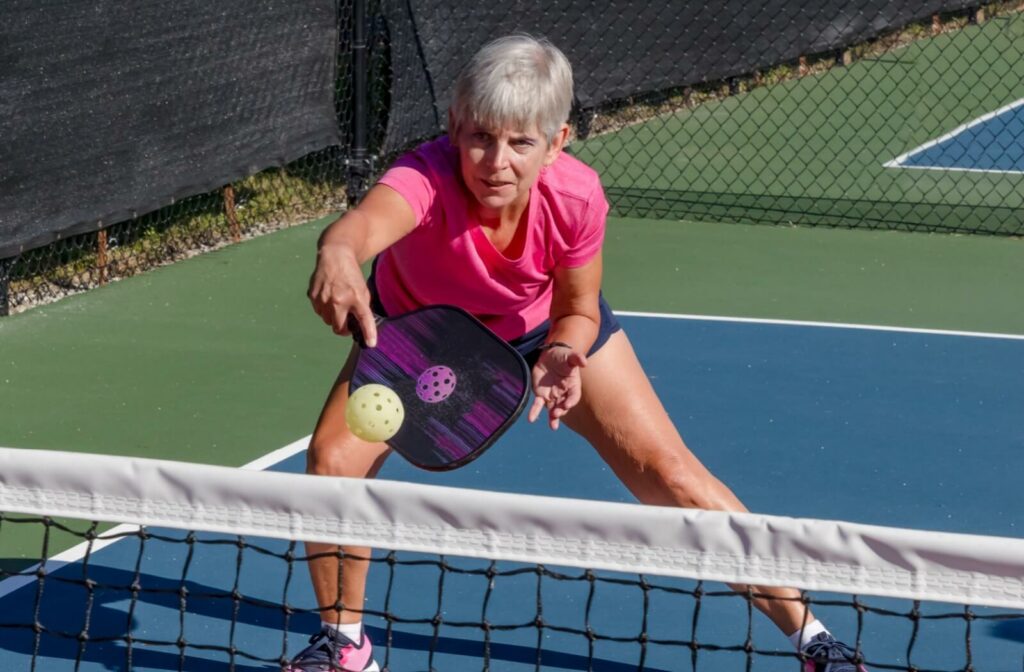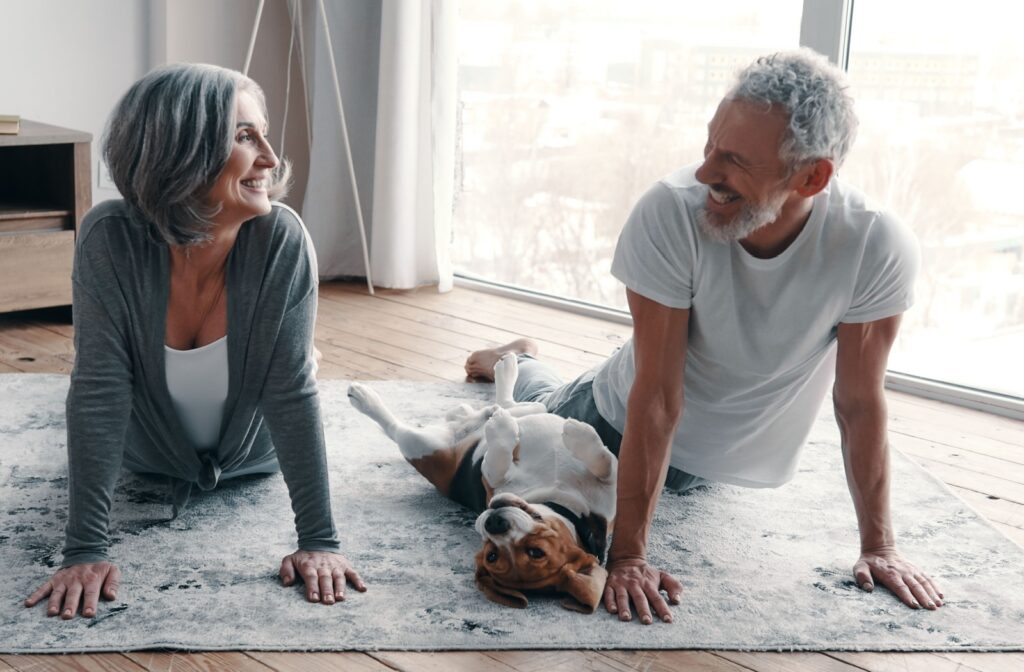Staying active is one of the most beneficial things seniors can do to maintain their health, independence, and overall quality of life. Regular movement helps maintain strength, improve balance, reduce joint pain, and even support cognitive function.
But not all exercises are equally beneficial—or safe—for older adults. The key is choosing activities that support flexibility, mobility, and endurance without placing too much strain on the body.
If you or a loved one is looking for easy, effective ways to stay active, these five senior-friendly exercises are a great place to start:
- Walking
- Pickleball
- Strength training with light weights
- Yoga
- Water aerobics
They’re all accessible, low-impact, and adaptable to different fitness levels, making them ideal for older adults who want to feel better and stay more independent.
How Much Exercise Do Seniors Need?
According to the CDC, older adults should aim for at least 150 minutes of moderate-intensity aerobic activity each week, along with muscle-strengthening activities on two or more days. That could mean just 30 minutes a day of movement like walking, swimming, or playing pickleball.
For those with limited mobility or chronic conditions, even shorter periods of gentle movement can still offer meaningful health benefits. The key is consistency—staying active on a regular basis helps maintain strength, balance, and mental clarity well into later life.
The following exercises are easy, fun, and promote well-being in seniors.
Walking
One of the simplest and most effective exercises for seniors is walking. It requires no equipment beyond a good pair of shoes, and it can be done indoors or outdoors, solo or socially. Walking helps improve cardiovascular health, strengthen leg muscles, and reduce the risk of chronic conditions like heart disease and type 2 diabetes.
Why It Works
- Boosts circulation and heart health
- Helps regulate blood sugar levels
- Improves joint flexibility and mobility
- Lifts mood and reduces anxiety
Regular walks, even for just 20 to 30 minutes a day, can make a big impact. Many seniors also enjoy walking as a way to connect with others, whether it’s a stroll around the community with a friend or a nature walk on a scenic trail.
Tips for Getting Started
Start slow if needed, especially after a period of inactivity. Wear comfortable, supportive shoes and choose smooth, well-lit walking paths. Even short walks throughout the day can add up to big health benefits.
Strength Training with Light Weights or Resistance Bands
Muscle loss is a natural occurrence with age, but strength training can help slow or even reverse this process. Using light weights or resistance bands a few times a week helps seniors maintain muscle mass, improve posture, and protect bone density.
Why It Works
- Builds and maintains muscle strength
- Supports balance and fall prevention
- Helps preserve independence in daily tasks like lifting, standing, or opening jars
- Boosts metabolism and supports weight management
This form of exercise is especially valuable for preventing frailty. It also reduces the risk of osteoporosis-related fractures by improving bone strength.
Tips for Getting Started
Strength exercises should be performed with slow, controlled movements to minimize the risk of injury. Try seated bicep curls, resistance band pulls, or standing leg lifts. Always begin with lighter weights and gradually increase resistance as strength improves. If needed, consult a physical therapist or fitness professional to ensure proper form.

Pickleball or Bocce Ball
Pickleball has become a favorite among older adults thanks to its mix of light cardio, coordination, and fun. Blending elements of tennis, ping-pong, and badminton, this paddle sport offers a great workout without being too hard on the joints. It’s typically played on a smaller court with lightweight equipment, making it easier to pick up and enjoy—even for beginners.
Bocce ball, another low-impact option, encourages friendly competition and movement at a more relaxed pace, perfect for those seeking social connection through play.
Why It Works
- Improves hand-eye coordination and reaction time
- Strengthens legs, arms, and core
- Boosts cardiovascular health with gentle aerobic movement
- Encourages social connection and friendly competition
One of the best parts? These activities don’t feel like formal exercise, making them perfect for seniors who want to stay active in a fun, low-pressure environment. With games that can be played at different speeds, they’re easy to enjoy at any fitness level.
Tips for Getting Started
Many communities and local recreation centers offer beginner pickleball workshops or bocce ball courts. A comfortable pair of court shoes, a paddle, and a positive attitude are all you need to get started.
Yoga or Stretching
Flexibility tends to decline with age, which can lead to stiffness, discomfort, and reduced range of motion. Gentle yoga or daily stretching helps counteract these effects by improving joint health and reducing muscle tension.
Why It Works
- Increases flexibility and joint range of motion
- Promotes relaxation and stress relief
- Supports better posture and alignment
- Enhances circulation and reduces stiffness
Yoga also emphasizes deep breathing and mindfulness, offering both physical and mental benefits. It’s an excellent practice for older adults dealing with arthritis, chronic pain, or anxiety.
Tips for Getting Started
Look for classes specifically designed for seniors or beginners. Chair yoga and restorative yoga are gentle options that allow for full participation without strain. If following a video or class, make sure the instructor offers modifications to suit all ability levels.
Water Aerobics or Swimming
For seniors with joint pain, water-based exercise is an excellent choice. The buoyancy of water reduces impact on the joints while still allowing for full-body movement. Water aerobics and swimming are fun, social, and highly effective for overall fitness.
Why It Works
- Reduces pressure on joints while still strengthening muscles
- Improves cardiovascular endurance
- Enhances flexibility and coordination
- Provides resistance for strength-building without weights
Swimming is especially beneficial for those with arthritis, osteoporosis, or mobility challenges. The water supports the body, allowing for movement that may not be comfortable on land.
Tips for Getting Started
Many senior communities or local fitness centers offer water aerobics classes designed for older adults. These classes often include gentle movement, stretching, and balance-focused exercises in a safe, low-impact environment.
Creating a Sustainable Routine
The most important part of any exercise plan is consistency. Even 20 to 30 minutes a day of gentle movement can make a dramatic difference in physical health, energy levels, and emotional well-being.
Here’s how seniors can build a lasting routine:
- Start small and build gradually to avoid fatigue or injury
- Combine different types of exercises throughout the week to target strength, balance, flexibility, and endurance
- Stay hydrated and eat nutritious meals to support recovery and energy levels
- Listen to the body and rest when needed
It’s always a good idea to talk to a doctor before starting any new exercise program, especially for those managing chronic conditions or recent injuries. With the right support and mindset, staying active is not only possible in older age—it’s empowering.
Encouraging Active Living in a Supportive Community
In a senior living community, staying active becomes part of the rhythm of daily life—especially when your surroundings make movement easy and enjoyable. At The Villages of Farragut, residents have access to thoughtfully designed spaces that promote wellness in every form. From walking and biking paths to a bocce ball court and outdoor putting green, opportunities for gentle, daily activity are just steps away.
Inside, the wellness center offers a space for group fitness and individualized exercise, while the Admiral Farragut Community Room hosts social events that keep energy and morale high. Whether it’s a stroll through the interior courtyard, a friendly game of billiards in the club room, or a lap around the dog park with a four-legged friend, movement here feels both meaningful and enjoyable.
At The Villages of Farragut, we believe that active living should be safe, social, and sustainable. Schedule a tour today to see how our community helps residents move more, feel better, and thrive—one step at a time.



